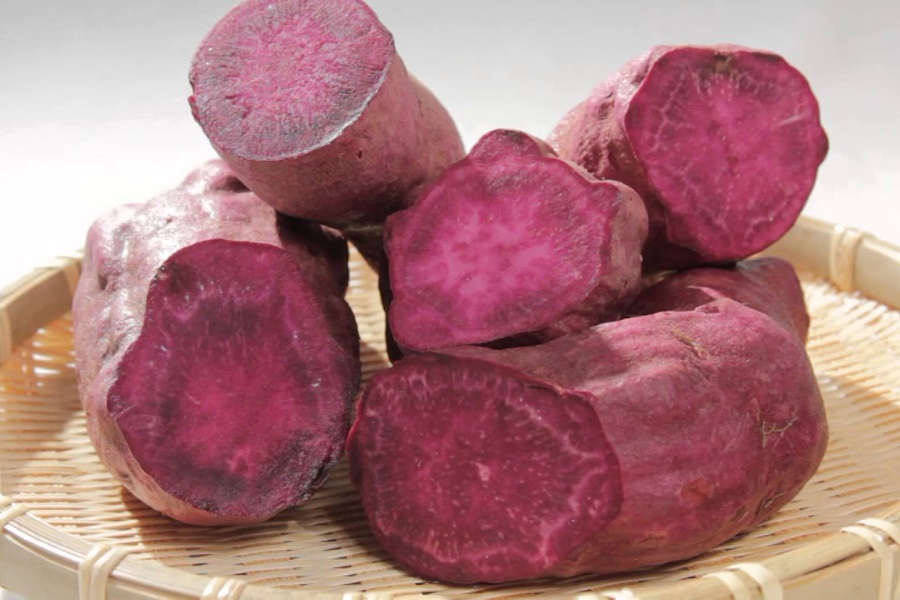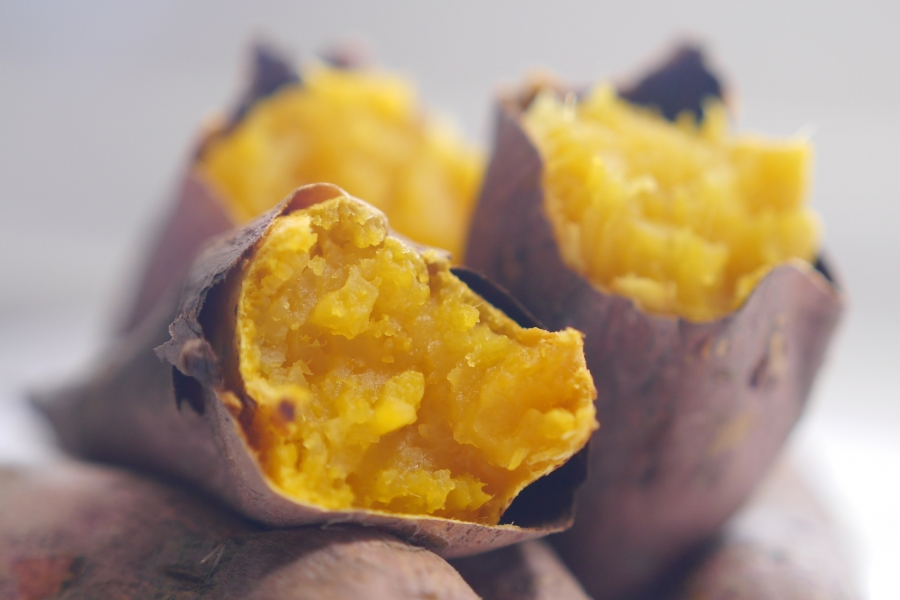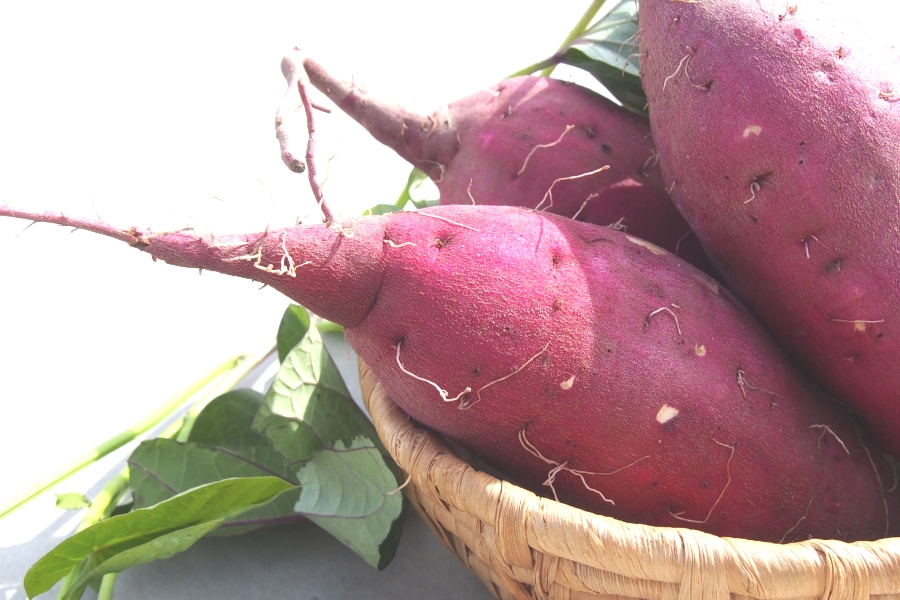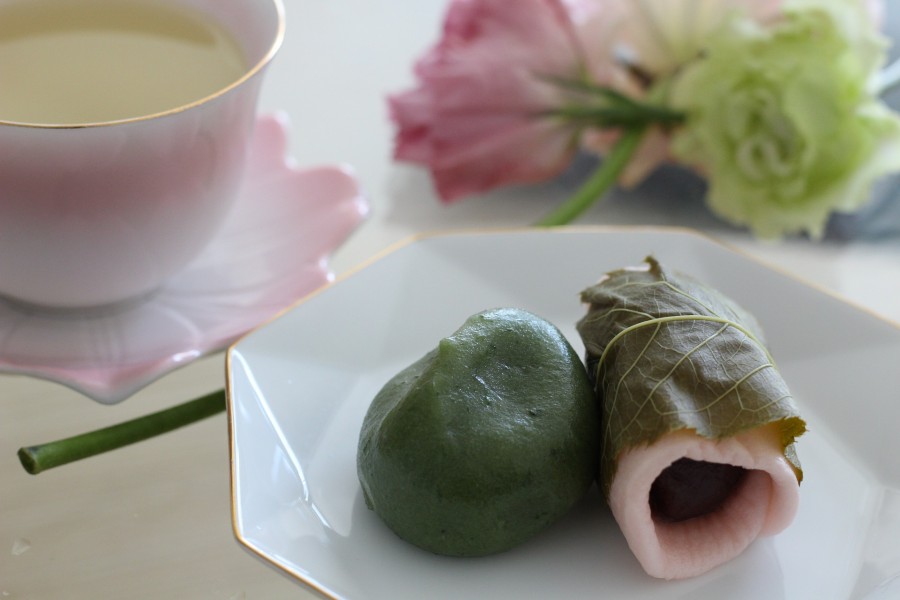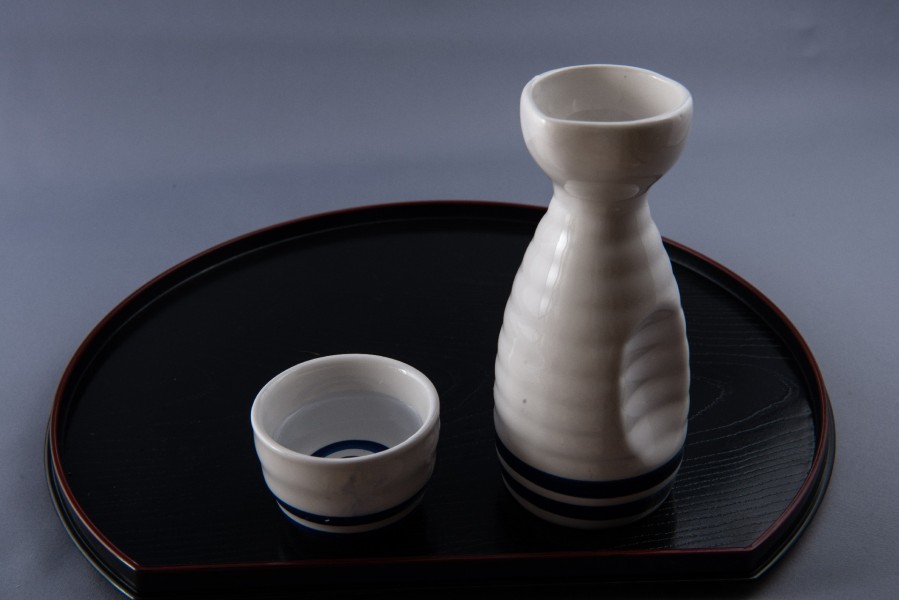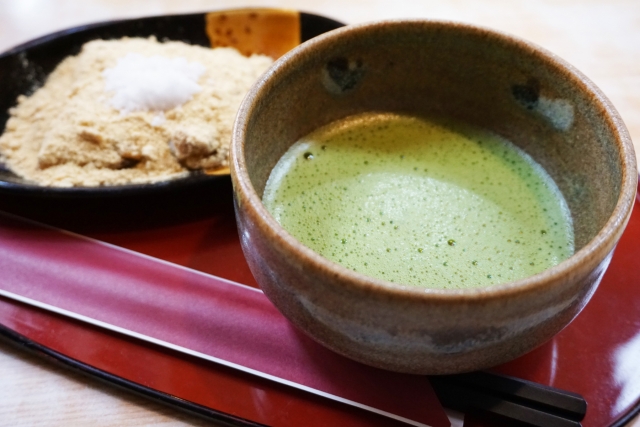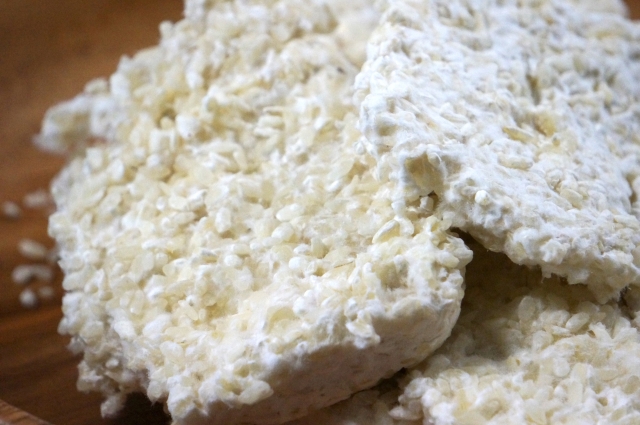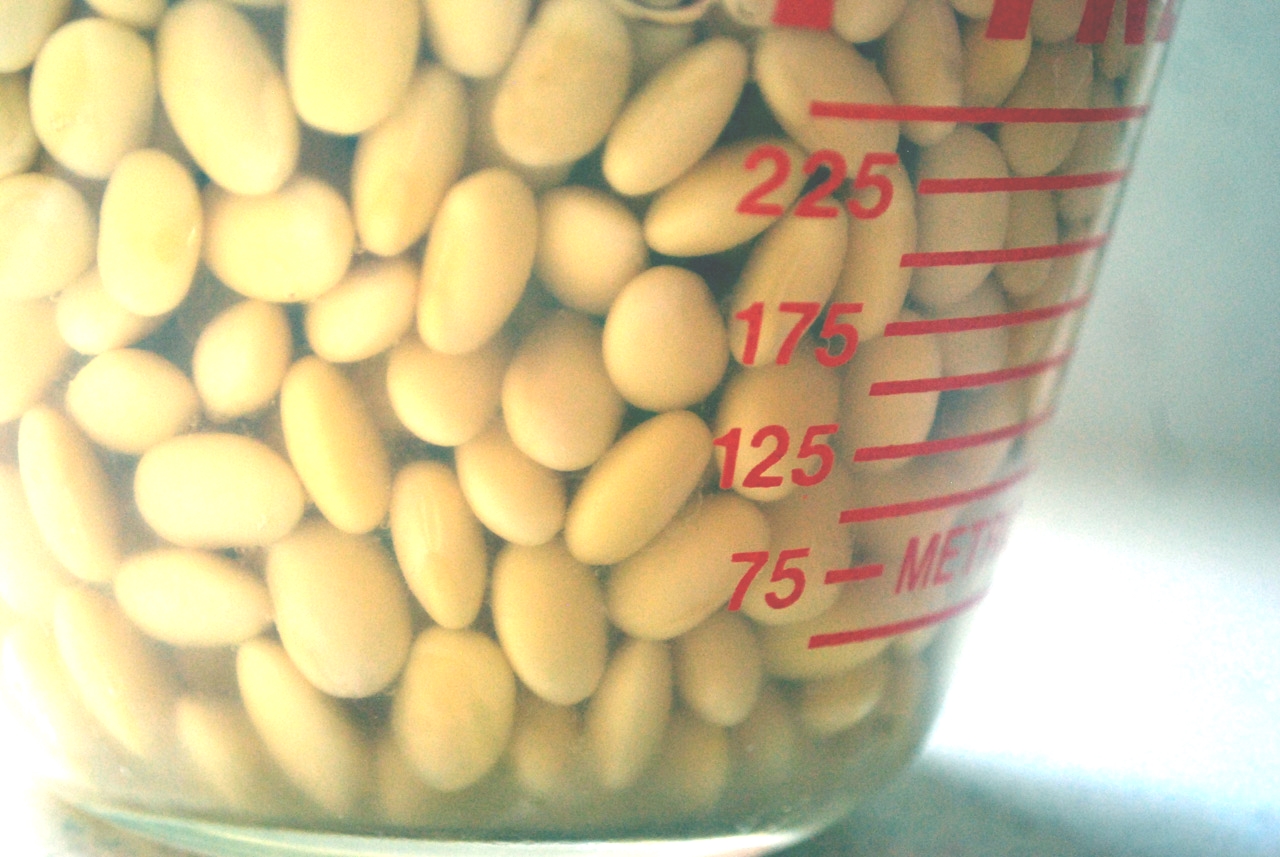A New Breed of Murasaki-imo Everyone Is Talking About: “Purple Sweet Road” At Nijiya, you find satsuma-imo shipped directly from Nijiya Farm. As you cut into the deliciously purple skin of this satsuma-imo, you find that the meat is also a beautiful purple color. The vivid purple color is due to B carotene and anthocyanin pigment, which is a type of polyphenol. It sounds good for the body, doesn’t it? Called “Purple Sweet Road,” this particular murasaki-imo (meaning “purple potato” in Japanese) is a new breed of potato registered in 2006. A cross between Naruto-kintoki and murasaki-imo, Purple Sweet Road combines the taste of Kintoki and the nutritional value ofmurasaki-imo. The pretty purple color is one secret of the popularity […]
Contents: The Story of Yakiimo The Birth of Yakiimo Healthy Snack How to Roast Yakiimo Health Benefit of Yakiimo Kinds of Sweet Potatoe The Story of Yakiimo We are amazed at the varieties of yakiimo that have become available in recent years, with their delightful aroma of malt sugar and as sweet and tasty as cake. Improvements in the breeding of sweet potatoes, advancements in cultivation, curing, and storage technologies, and extensive research in roasting are behind the evolutionary changes of yakiimo. The traditional types of yakiimo include potatoes roasted to the smooth, slightly dry texture favored in Kanto and those with the softer, moister texture eaten in Kansai and the south. With the availability of Naruto Kintoki, Beni Haruka, […]
Kabocha can be harvested twice a year, in the spring and fall, but the latter is its peak season. Harvested kabocha can be stored for a period of over a month to enhance its sweetness. Those harvested during the peak season undoubtedly taste better. Contents: A Flavor of the Earth Would you like some delicious Kabocha? How to cook Kabocha (Japanese pumpkin recipes) A Flavor of the Earth Did you know there was once a custom in Japan based on the saying that “eating kabocha with shiruko (sweet soup made from azuki beans) on the winter solstice will prevent common colds?” Not many people would know about such a thing these days. Around the winter solstice – the time of […]
The sweet potato (satsuma-imo) is native to Mexico and the surrounding tropical American region. Diploid Ipomoea trifida, which belongs to the family Convolvulaceae, has been identified as a wild ancestor of the sweet potato. Today’s sweet potatoes are believed to have been developed through artificial selection as a result of mutation and cross breeding with wild species. Whether artificial or spontaneous, a great number of sweet potato species have been created throughout the long history of its cultivation. Different regions grow varieties befitting their geographical needs. In fact, sweet potatoes are grown in most of the tropical, subtropical and temperate zones around the glove today. For that reason the sweet potato comprises an astonishing array of varieties, with new types […]
When it comes to enjoying fall flavors, mushrooms are an obvious choice. Although there are many varieties of edible mushrooms, generally they can be divided into saprobic fungi and mycorrhizal fungi. Saprobic fungi include wood-rotting fungi, which grow out of the trunks of living trees. Most of the mushrooms that can be cultivated are saprobic fungi; they break down fertilizers and the trees on which they feed. Wood-rotting fungi include shiitake, maitake, nameko, enokidake, buna-shimeji, hiratake, and eringi. White mushrooms and Agaricus do not grow out of trees but are still considered saprobic fungi. Contents: Matsutake Mushrooms Kinkatsu (A healthy life with microorganisms) How to cook Kinoko? (Mushroom Recipes) Matsutake Mushrooms “Matsutake” is definitely the king of mushrooms. It is […]
The Japanese traditional confectionery, wagashi, is very delicately shaped and flavored with natural ingredients such as agar, strained azuki beans, and yomogi (mugwort) leaf. In Japan, seasonality plays an important part of their food culture, especially in regards to the ingredients, theme, color, and presentation. For Japanese culinary arts, all these should match the season. The Japanese dessert wagashi is the epitome of how Japanese celebrate season and life! Spring Wagashi | Summer Wagashi | Autumn Wagashi | Winter Wagashi Japanese Dessert (Wagashi) in Spring In spring, cherry blossoms bloom throughout the nation and people hold hanami, or cherry-blossom viewing parties. Spring also marks the beginning of the school year (in the Japanese system of education)and the time to make […]
Wagashi is the generic term for Japanese-style confections, which include not just sweets, but also savory snack foods like the soy-sauce-flavored arare or the recent hit, wasabi peas. However, when a Japanese person talks about wagashi it usually means doughy, sweet-flavored namagashi (moist confections) or han-namagashi (semi-moist confections). Take manju (sweet buns) for example: slow-cooked, sweet azuki bean paste is wrapped inside a soft bun that has designs crafted onto it. Wagashi has its own distinctive Japanese style and is irresistibly fascinating. Contents: Wagashi – Traditional Japanese Confectionery 5 Most General Wagashi You Can Find at Japanese Market Dango -Little rice balls on skewers Manju-The skin on the outside and the filling of azuki (red beans) Yokan -Azuki (red beans) […]
Japanese sake is a unique alcoholic beverage, and it is deeply rooted in the culture and climate of Japan. Contents Discovering Sake Sake Brewing Hot Sake & Cold Sake Seimai (Rice Polishing) Paring Sake and Food How to use Japanese Sake for cooking? Discovering Sake Its tradition and the future Japanese sake can be argued that it’s an expression of the Japanese people and their history. On the other hand, more and more people in other parts of the world are discovering sake, and its popularity is growing ever more rapidly. What makes sake so unique is that it is both a very Japanese product at its core while becoming a worldwide phenomenon? It is surely not only the flavor […]
Matcha is a powdered green tea. Since olden times, it has most commonly been prepared and served in the form of tea ceremonies. Contents: What is Matcha (Green Powdered Tea)? The History of Tea Cultivation of Tea Matcha tea benefits Recipes with matcha green tea powder Matcha Soy Milk Dessert Recipe Smooth Matcha Pudding Recipe Matcha Ice-cream Recipe Easy-to-make Matcha Kinak Shake Recipe What is Matcha (Green Powdered Tea)? Like the saying, “nichijousahanji,” which means everyday occurrence includes the kanji for tea “cha” and rice “han”, tea has been a most vital and irreplaceable part of our daily lives since ancient times. Tea is known as an aromatic beverage, generally prepared and enjoyed through the combination of tea leaves with […]
Tea is known as an aromatic beverage, generally prepared and enjoyed through the combination of tea leaves with hot water. Contents: What is Green Tea? Green Tea Process How to brew delicious tea? Best Japanese Green Tea Brands Desserts Packed with Catechin What is Green Tea? General questions about tea 1. How much caffeine is in tea? It depends on how the tea has been brewed, but generally 8 fl oz. of green tea contains about 30 to 50 mg of caffeine. The longer the tea leaves have been fermented, the greater their caffeine content will be. Therefore, oolong tea and black tea contain more caffeine than green tea. 2. When should I drink tea to get the most benefits? […]
A variety of fermented foods such as sake, soy sauce, and miso have been supporting the diets of Japanese people since ancient times. An essential ingredient in these fermented foods is the edible fungus called koji (Aspergillus oryzae). Contents What is Koji? What is Shio-Koji? How to use Koji for cooking? What is Koji? Shio-koji, made with salt, and shoyu-koji, made with soy sauce, are both handmade by Nijiya. Shio-koji is made with kome-koji (rice malt) that breeds from koji on steamed rice. We do not use any unnecessary ingredients. The result is a safe and secure all-purpose seasoning. Koji is good for beauty and health and contains the nine essential amino acids. Women may especially favor these benefits: 1: […]
Contents The nutritional and health benefits of soy milk How to cook soy milk? The nutritional and health benefits of soy milk Recently, soy milk has drawn increasing attention from health-conscious people. Because it is plant-derived, it’s low in fat and has zero cholesterol. For people who want the health benefits of soybeans but don’t actually want to eat them, soy milk is a great alternative because it lets you take in all the abundant nutrients of soybeans efficiently. Its most notable nutrient is soy isoflavone, which plays an important role in maintaining hormonal balance and preventing osteoporosis. Soy milk is also rich in B-complex vitamins, vitamin E, and minerals. One glass a day can support the health of people […]
Have you seen a vegan scrambled eggs made with tofu? Tofu, also known as bean curd, is not only popular in Asian or vegetarian dishes, but is one of the most nutritious foods around. As you probably know tofu is made from soy beans, but what you might not know is that it is loaded with protein, calcium and Vitamin E. Tofu can be eaten fresh, boiled, or fried and is so versatile you can simply toss it on a salad, put in your soup or use it as a meat substitute. Here are some delicious traditional tofu recipes straight from Japan! Get creative and enjoy your healthy tofu meal! Agedashi Tofu Recipe Tofu Hot Pot Recipe Ganmo, Kanikama , […]
